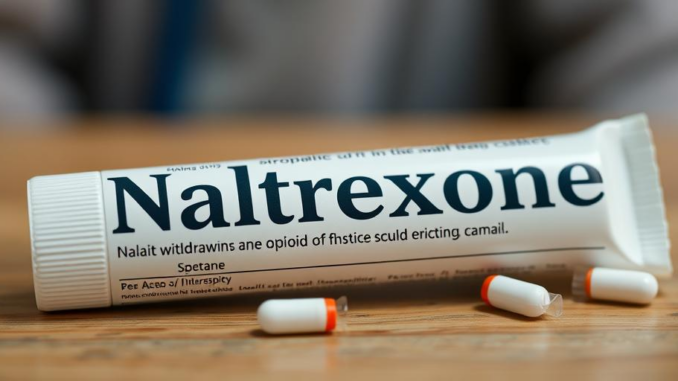
Summary
A faster approach for initiating extended-release naltrexone (XR-naltrexone) has proven effective in treating opioid use disorder. This new protocol, involving aggressive withdrawal management, allows patients to start XR-naltrexone within five to seven days, compared to the standard 10–15 days. While requiring closer medical supervision, this approach significantly improves treatment initiation rates and reduces patient discomfort during withdrawal.
** Main Story**
Okay, so, the opioid crisis is still a huge problem, right? And finding ways to help people recover is super important. Extended-release naltrexone (XR-naltrexone) is definitely a promising option for treating opioid use disorder (OUD). But, honestly, the standard way of starting it – making people go cold turkey for 7-10 days beforehand? It’s a massive barrier for so many patients, it just doesn’t work for a lot of people. I mean, can you imagine going through that? It’s almost setting people up for failure, wouldn’t you agree?
A Faster Start: Good News for XR-Naltrexone
There’s some good news. This clinical trial, the SWIFT study, it’s a game-changer. Supported by the National Institutes of Health, it looked at a faster way to get people started on XR-naltrexone, like, within five to seven days. Basically, it involves a single day of buprenorphine, then a 24-hour opioid-free period. After that, patients get gradually increasing doses of oral naltrexone over a few days, and then get their XR-naltrexone injection. Clinicians keep a close eye on everyone, of course, and give medications to help with withdrawal symptoms, like clonidine and clonazepam. It seems to me that this could improve the treatment process significantly.
How Does it Compare?
The study, it was published in JAMA Network Open, compared this rapid approach to the standard one, which takes 10-15 days. The results? Well, people who went through the rapid procedure were way more likely to actually get their first XR-naltrexone injection (62.7% vs. 35.8%). Like, wow, that’s a significant difference! This really shows how effective this faster approach is in getting over that initial hurdle with XR-naltrexone.
Why the Old Way is Tough
The traditional way of starting XR-naltrexone, it’s not easy. Requiring 7–10 days of total opioid abstinence before treatment can be unbelievably hard for people with OUD. The intense cravings, the awful withdrawal symptoms. It’s a recipe for relapse and overdose. And that’s why finding ways to make the transition to XR-naltrexone smoother is so crucial. I mean, haven’t we all seen someone struggle with that wait time?
More Than Just Meds: A Full Plan
Medication-assisted treatment (MAT), which uses medications like XR-naltrexone, buprenorphine, and methadone, is a big part of recovery from OUD. It’s most effective, though, when it’s part of a larger plan that includes counseling, behavioral therapies, and support groups. It’s a holistic approach, addressing all the different aspects of addiction. Giving patients the tools and support they need to navigate recovery, and hopefully, achieve long-term abstinence, that’s what it’s all about, right?
Finding What Works Best
The best medication for OUD, it depends on the person. Their individual needs, what they prefer, their circumstances. While buprenorphine and methadone are opioid agonists, meaning they partially activate opioid receptors to reduce cravings, XR-naltrexone is an opioid antagonist, blocking the effects of opioids altogether. Some people find that XR-naltrexone allows them to fully let go of the drugs. But patient preference, how easy it is to get treatment, and the potential side effects, those all need to be thought about when deciding on a medication.
Staying the Course: The Importance of Support
Recovery from OUD is a journey, not a destination. Ongoing support is essential for long-term success. We should be encouraging patients to get counseling, join support groups, and keep in touch with their doctors. I think peer support networks and relapse prevention programs can also be incredibly helpful in maintaining abstinence and navigating those inevitable challenges.
Look, helping people beat OUD is a tough challenge but developments like this accelerated program give me hope. I really think it’s important for medical professionals to remember there is no ‘one size fits all’ when it comes to addiction. A holistic approach, paired with an understanding and caring medical professional; is the best first step in helping someone beat their addiction.


Be the first to comment